Abstract
The case of a girl with leukaemia, known as Child B, hit the headlines in March 1995 when her father refused to accept the advice of doctors who counselled against further treatment and took Cambridge and Huntingdon Health Authority to court for refusing to fund chemotherapy and a second bone transplant for her in the private sector. British national newspapers varied greatly in the way they covered the case. Some paid little attention to clinical considerations and presented the case as an example of rationing based on financial considerations. Their selective presentations meant that anyone reading just one newspaper would have received only limited and partial information. If members of the public are to participate in debates about treatment decisions and health care rationing, means other than the media will need to be found to inform and involve them.
Full text
PDF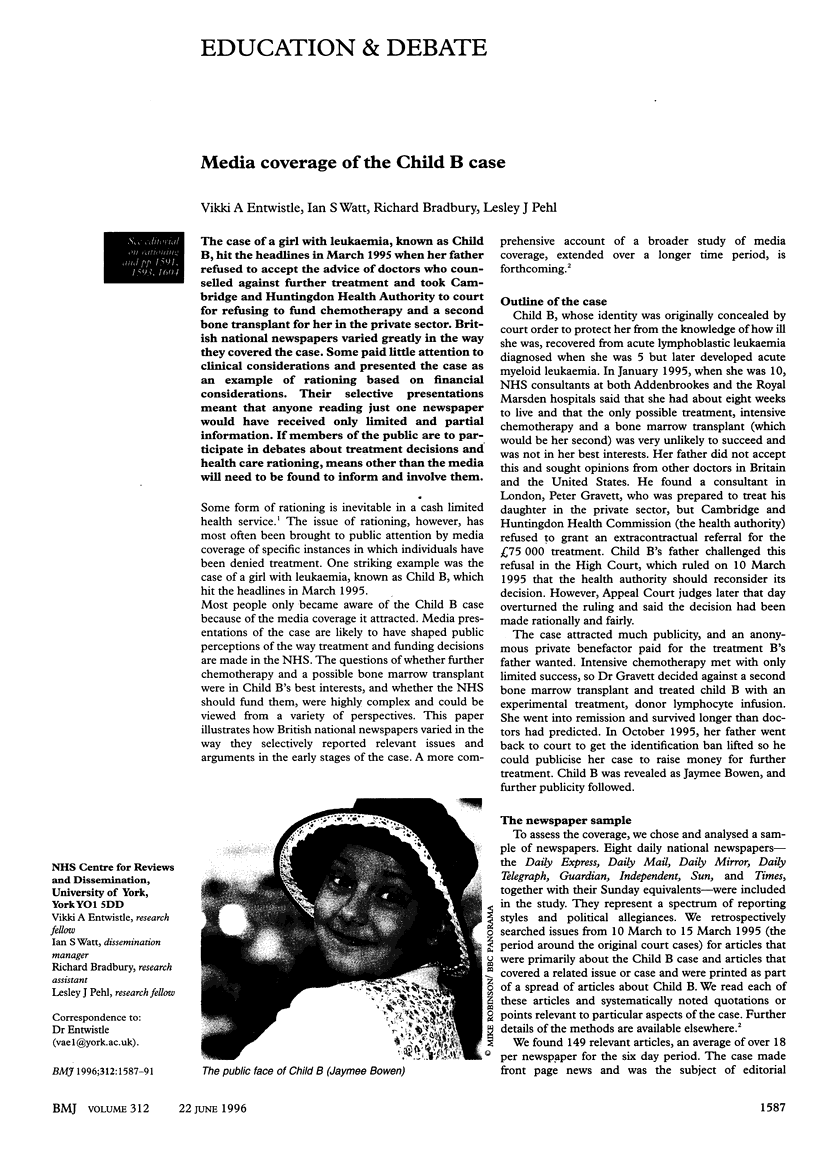
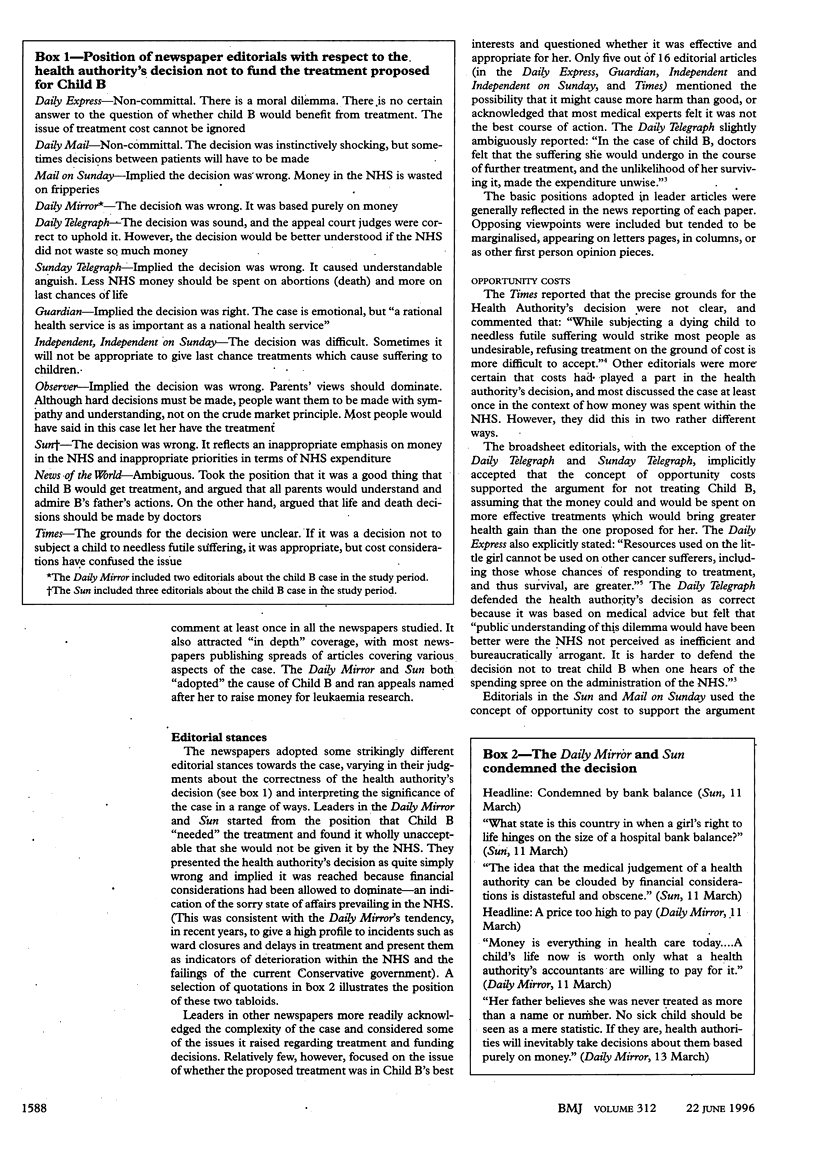
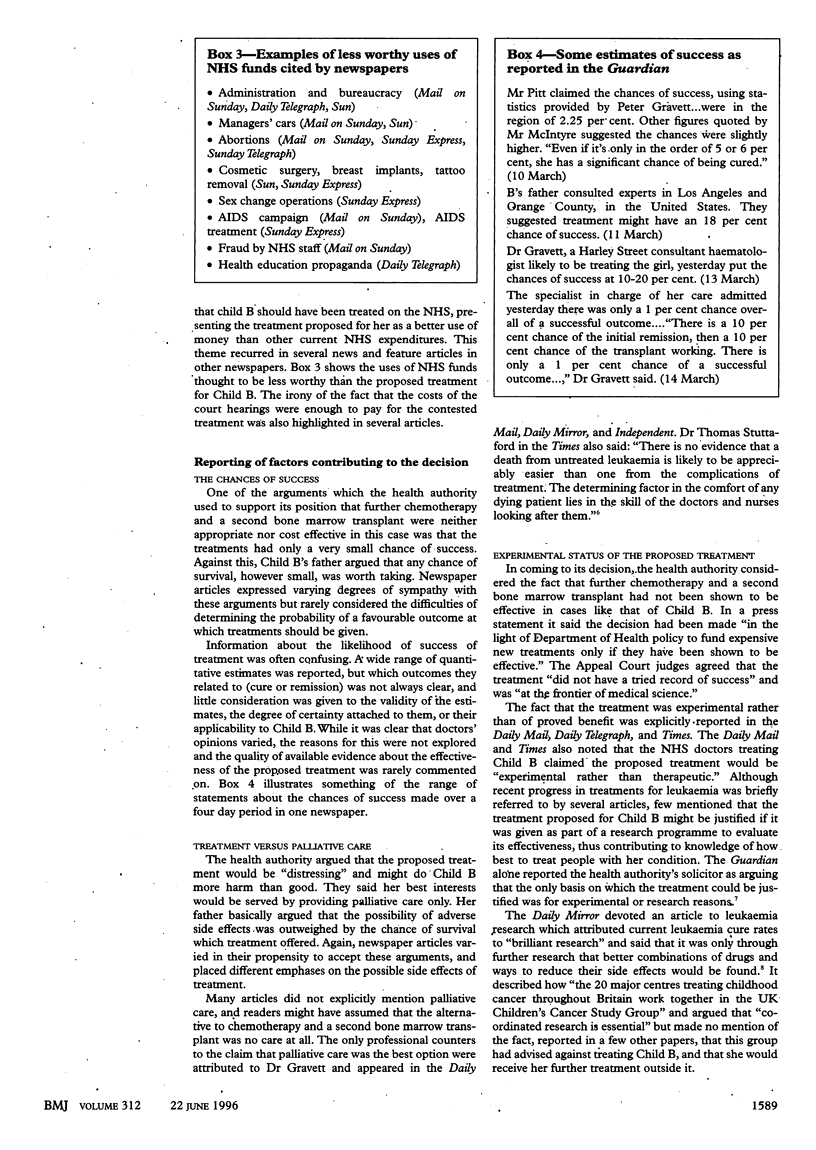
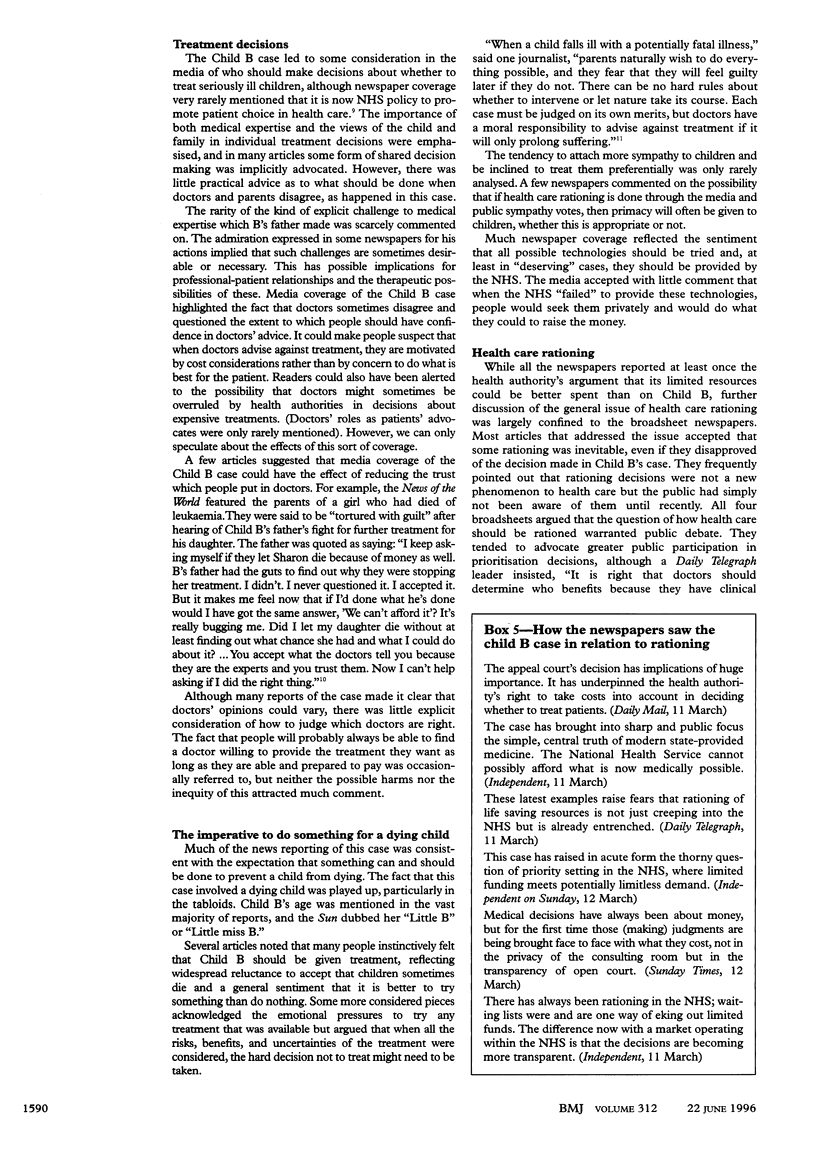
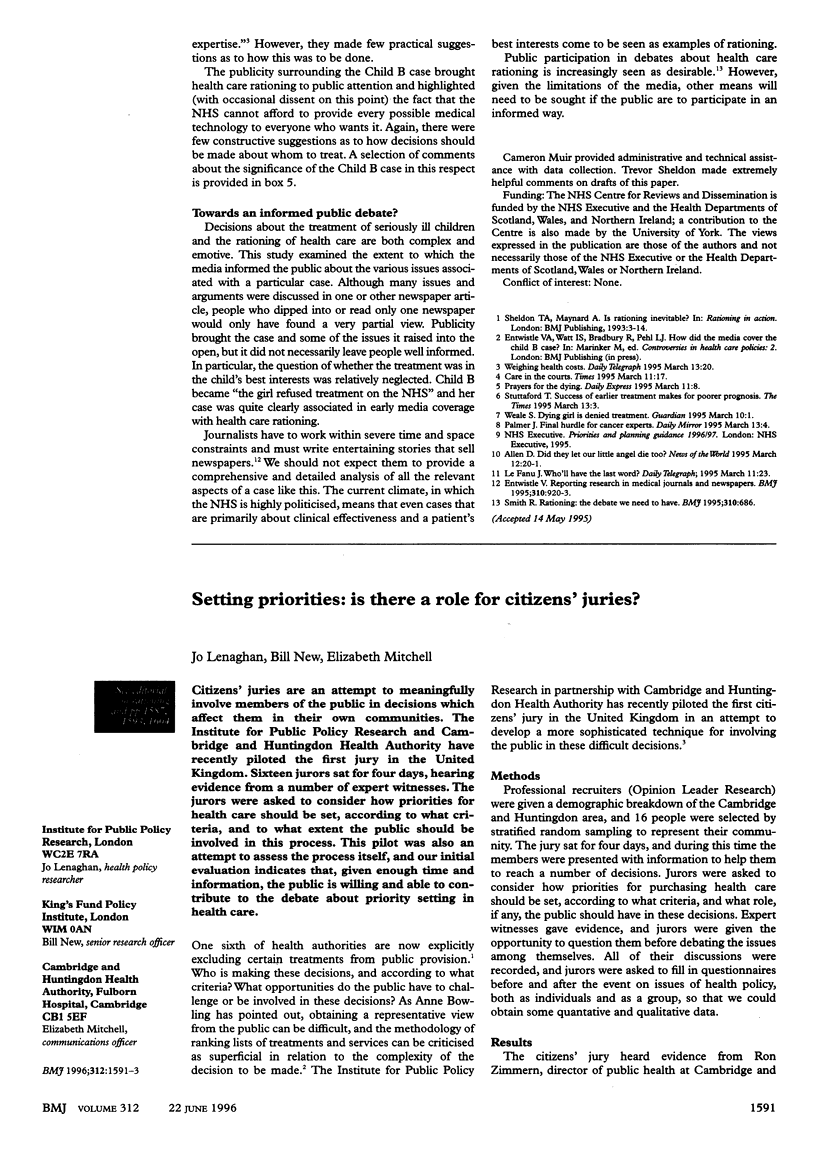
Images in this article
Selected References
These references are in PubMed. This may not be the complete list of references from this article.
- Entwistle V. Reporting research in medical journals and newspapers. BMJ. 1995 Apr 8;310(6984):920–923. doi: 10.1136/bmj.310.6984.920. [DOI] [PMC free article] [PubMed] [Google Scholar]
- Smith R. Rationing: the debate we have to have. BMJ. 1995 Mar 18;310(6981):686–686. doi: 10.1136/bmj.310.6981.686. [DOI] [PMC free article] [PubMed] [Google Scholar]



